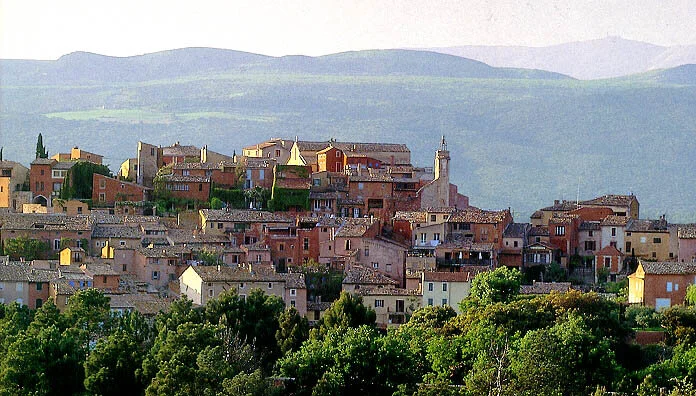
A Guidebook to the Beautiful Luberon Region of Provence
You do not know me, but I feel I do know you after reading your guide cover to cover and actually doing all of the loops, some of them several times during our 6 week stay in France. We were enchanted with your guide—the well written text and the excellent recommendations. Having it with us made our stay all the more perfect. —Patricia F., October 2008
About the Luberon
The Luberon is a small mountain range in the heart of the Vaucluse region of Provence in the southeast of France, with hilltowns, villages, and a few bustling market towns scattered on its flanks and at its feet. It is a region of rugged limestone hills, intimate agricultural valleys, and thousand-year-old villages carved out of the hillsides onto which they cling. Olives and grapes have grown there since Roman times, and lavender—once harvested wild from the hillside meadows—now dominates the upland fields.
The Luberon is an ideal base from which to explore Provence. Centrally located and within easy driving distance of the great historic cities of the region, Avignon, Arles, and Aix-en-Provence, it is an area rich in the things one goes to Provence to find: lively outdoor markets, good food and wine, brilliant light, and a populace that enjoys simple pleasures, good conversation, and long lunches. It is popular with tourists, but not spoiled by tourism. There are plenty of lively cafes and good restaurants, but one is seldom more than five minutes away from back roads and byways, trails into the hills, and country lanes meandering through orchards and vineyards.
The Visible History of the Luberon
The Luberon is rich in visible history. A major Roman road from the Italian peninsula to Spain ran along the north side of the Luberon, passing through the Roman town of Apt and crossing the Calavon river on the Pont Julien, which still spans the river today, in spite of the floods of two millennia. There is an elaborately ornamented Roman arch in Cavaillon, as well as a museum with important Gallo Roman artifacts. In Apt you can sit on a low Roman wall in a sunny square and eat your pizza from a nearby pizza truck on market day; and in a small, funky museum in Cucuron you can see bits of sculpture and a remarkable incised fresco recovered from the remains of a Roman villa discovered by a local farmer as he plowed his fields in 1983.
The most prominent features of the Luberon's visible history are the Medieval hilltowns. Gordes, Roussillon, Bonnieux, and Ménerbes are the most famous ones, but there are many others, each with its own particular story and charm. Begun in the Dark Ages, when people's best protection from repeated raids was to locate their dwellings in defensible and inaccessible places, and built of the stone on which they perch, they have evolved through the centuries as a form of collective sculpture.
The eighteenth and nineteenth centuries have also left their marks on the villages, towns and landscape. Most of the fountains and communal washhouses date from this period, along with some gracious townhouses, imposing civic buildings, and the stately plane trees that have become so much a defining characteristic of Provençal villages and roadways. Lavender fields, another symbol of Provence, are rather late arrivals to the landscape; indeed, large scale commercial production did not begin until the 1920’s.
As Laurence Wylie documents in his brilliant study of Roussillon in the 1950’s, Village in the Vaucluse, life in the Luberon remained insular, traditional, and subsistence oriented even after the Second World War. But post-war irrigation projects, a real estate boom fueled by northerners in search of sunny second homes and vacation rentals, and tourism have made the Luberon of today both prosperous and cosmopolitan. The generation of men who joined the Resistance during the war and used their country skills and savvy to survive in the caves and canyons of the Luberon lived to watch the Mercedes and BMW's roll into town on summer mornings and to profit from this latest invasion.




